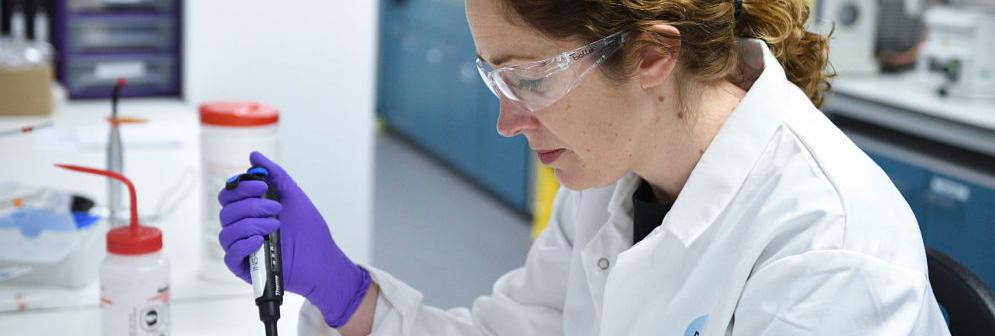Controlled release antimicrobial to offer alternative to antibiotics

Ten years of Bristol’s pioneering biomaterials research has led to the launch of a novel technology to prevent and treat bacterial infection. The award-winning technology has exciting potential across human and veterinary medicine and could help combat the rising threat of antimicrobial drug resistance.
Pertinax™ is a patented, sustained release technology for the common antiseptic, chlorhexidine, for use in biomaterials, topical agents and coatings for medical devices. It protects against infection for longer and is less toxic to cells than traditional formulations, which dissipate faster and need more frequent applications.
Dr Michele Barbour, at Bristol Dental School, invented the technology and founded spinout company, Pertinax Pharma to develop it commercially. Originally Pertinax™ was formulated primarily with dental and oral hygiene applications in mind. However, Dr Barbour and her team have since validated it for a whole host of applications, including wound care, medical devices and veterinary medicine.
Major benefits could include more effective wound care dressings, dental fillings that are less likely to fail, sustained protection against umbilical cord infections, and smart coatings for medical devices (eg catheters, implants and stents) that offer long lasting protection against infection without reliance on antibiotics.
Award winning innovation
The innovation won the £25,000 Materials Science Venture Prize, awarded by the Worshipful Company of Armourers and Brasiers. Pertinax Pharma also scooped a Medilink South West Business Startup Award and is part of the University’s burgeoning spinout portfolio. This allowed it to raise £1.6M from outside investors and £500,000 from InnovateUK’s Aid for Start-Ups scheme.
The company is now seeking to license the technology, with an initial focus on wound care. The low solubility of Pertinax™ gives wound dressings with up to 14 days antibacterial protection that are less toxic than conventional products. This reduces patients’ need for uncomfortable and inconvenient dressing changes that delay healing and increase the risk of secondary infection.
‘We have created prototype antimicrobial sutures that could rival the leading commercial antimicrobial suture, using Triclosan, and are developing our capabilities in other key areas, such as wound dressing foams and adhesives,’ said Dr Barbour, now CEO of Pertinax Pharma.
A replacement for antibiotics
In dentistry, Pertinax™ in cements could reduce failure of dental fillings by maintaining an environment in which bacteria cannot colonise. A related approach can be used with bone cements, using Pertinax™ to replace the antibiotics that are usually used in bone cements to reduce secondary infections. The long lasting antimicrobial action of Pertinax™ fillers and coatings could also help protect against medical device-related infections without the need for antibiotics. Resistance of bacterial infection to antiseptics is much less than that of antibiotics, and is generally associated with sub-optimal doses. This is less likely with Pertinax™ than other antiseptic treatments because controlled chlorhexidine release makes optimal doses easier to maintain.
Dr Barbour says, ‘We’re very excited about Pertinax™’s potential in medicine, particularly as antibiotic resistance becomes more prevalent and doctors turn to non-antibiotic technologies to protect and treat their patients.’
Developing applications for everyday use
The company is now poised to formalise some of the partnerships it has been negotiating and has appointed Business Development Manager, Paul Williams, who has a strong track record in the global wound care market.
Paul Williams said, ‘I simply couldn’t resist joining the Pertinax™ team because the technology has such commercial potential. We are now talking to several manufacturers and soon expect to be developing Pertinax™ applications for use in advanced wound care, veterinary and dental products’.